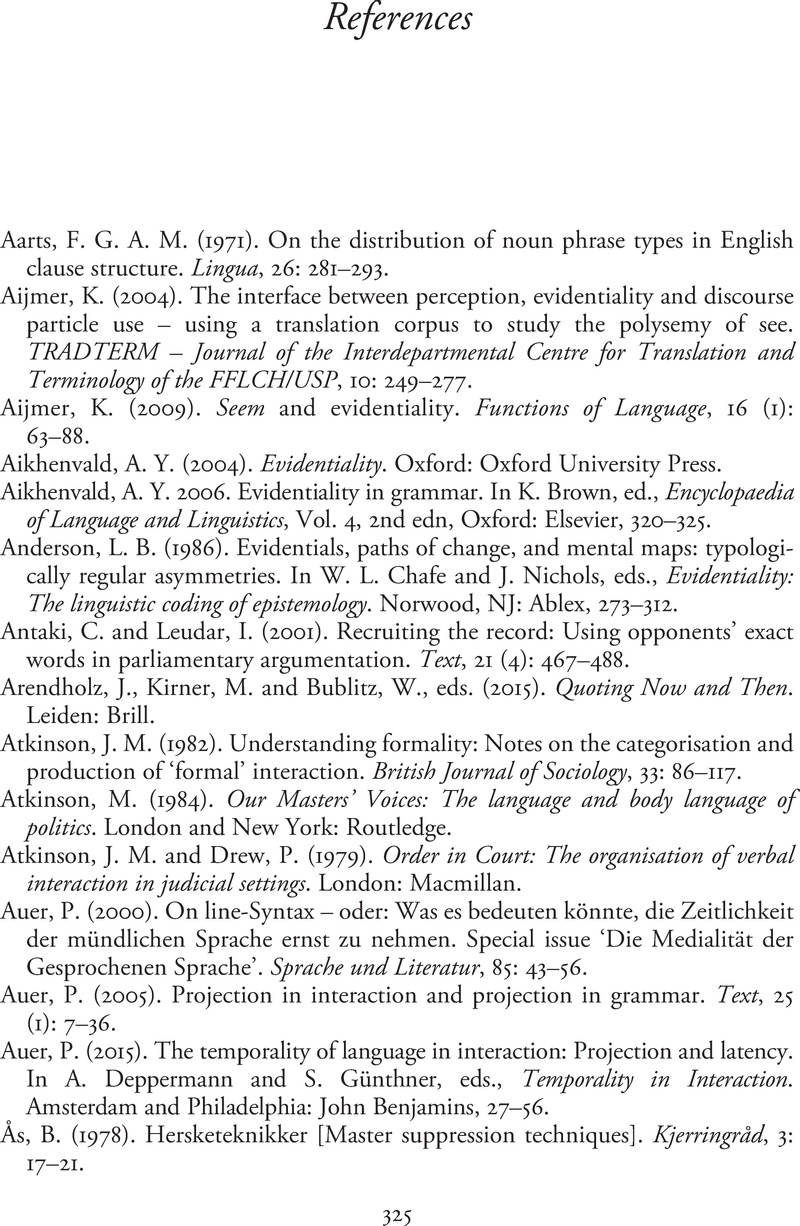Book contents
- Quoting in Parliamentary Question Time
- Studies In English Language
- Quoting in Parliamentary Question Time
- Copyright page
- Contents
- Figures
- Tables
- Acknowledgements
- Abbreviations
- Chapter 1 Introduction
- Chapter 2 Reported Speech and Evidentiality
- Chapter 3 Prime Minister’s Questions
- Chapter 4 Data, Transcription, and Methodology
- Chapter 5 Reporting Clauses
- Chapter 6 Reported Clauses
- Chapter 7 Reported Speech and Rhetorical Structures
- Chapter 8 Reported Speech in Recurrent Courses of Action
- Chapter 9 Summary and Conclusions
- Book part
- References
- Index
- References
References
Published online by Cambridge University Press: 27 August 2021
- Quoting in Parliamentary Question Time
- Studies In English Language
- Quoting in Parliamentary Question Time
- Copyright page
- Contents
- Figures
- Tables
- Acknowledgements
- Abbreviations
- Chapter 1 Introduction
- Chapter 2 Reported Speech and Evidentiality
- Chapter 3 Prime Minister’s Questions
- Chapter 4 Data, Transcription, and Methodology
- Chapter 5 Reporting Clauses
- Chapter 6 Reported Clauses
- Chapter 7 Reported Speech and Rhetorical Structures
- Chapter 8 Reported Speech in Recurrent Courses of Action
- Chapter 9 Summary and Conclusions
- Book part
- References
- Index
- References
Summary

- Type
- Chapter
- Information
- Quoting in Parliamentary Question TimeExploring Recent Change, pp. 325 - 342Publisher: Cambridge University PressPrint publication year: 2021

